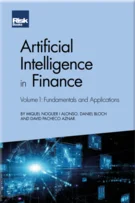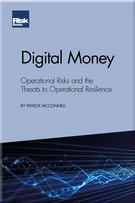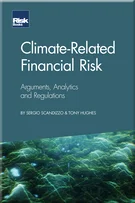Classical cryptography
Classical cryptography
Introduction: Money is information on the move
Trends in digital money
How digital money creates new operational risks
Operational risk and cryptography
Operational risks of digital money
Commercial bank digital money
Private digital money, including cryptocurrencies
Public digital money, including CBDCs
Impact of digitisation on operational risk management
Impact of digitisation on operational risk organisations
Impact of digital money and operational resilience on ORM processes and people
Impact of digitisation on operational risk management in the future
Theory of money
Information theory
Classical cryptography
Modern cryptography
Conclusion
Acknowledgements
Appendix 1: Significant contributors to information theory and cryptography
Appendix 2: Timeline of significant contributions to information theory and cryptography
Appendix 3: Relevant information standards
Appendix 4: High-level risk registers
Bibliography
This chapter describes some of the key concepts of classical cryptography as they relate to digital money and operational risk. Cryptography is a subdiscipline of information theory as it is about adding information to information about money to obscure it – for example, to disguise its contents so that critical information cannot be read, or to sign it so that its source cannot be properly identified. Cryptography is a discipline that is relatively simple in concept but can be excruciatingly difficult in detail. The development of high-performance computers and telecommunications has advanced the discipline immeasurably as it allows complicated mathematical algorithms to be developed to obscure and sign information that is near to impossible to decrypt.
The main body of the chapter is designed to explain the concepts in a way that, without dumbing down, a manager or board member can understand and, importantly, relate to how their businesses must be managed in the future. Going forward, an understanding of the concepts of cryptography will be critical to understanding the operational risks that firms are running in managing digital money. The approach in this chapter is not
Copyright Infopro Digital Limited. All rights reserved.
As outlined in our terms and conditions, https://www.infopro-digital.com/terms-and-conditions/subscriptions/ (point 2.4), printing is limited to a single copy.
If you would like to purchase additional rights please email info@risk.net
Copyright Infopro Digital Limited. All rights reserved.
You may share this content using our article tools. As outlined in our terms and conditions, https://www.infopro-digital.com/terms-and-conditions/subscriptions/ (clause 2.4), an Authorised User may only make one copy of the materials for their own personal use. You must also comply with the restrictions in clause 2.5.
If you would like to purchase additional rights please email info@risk.net










